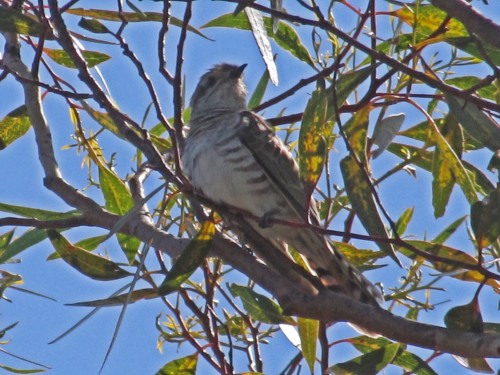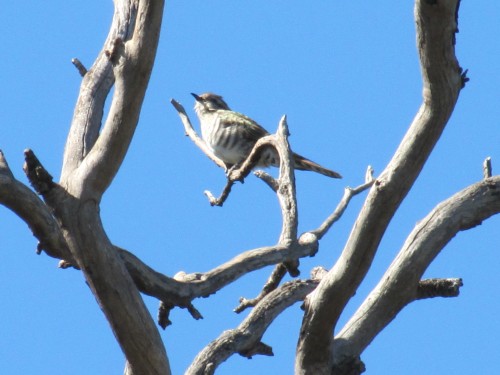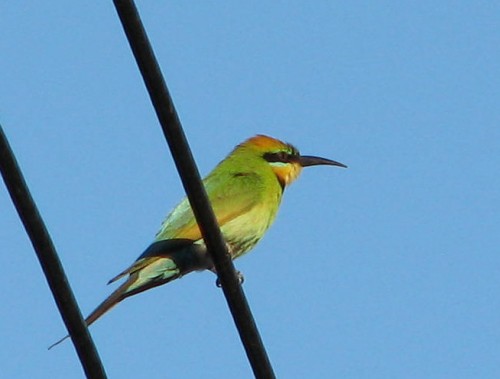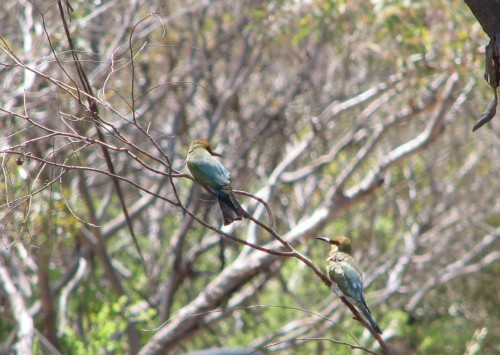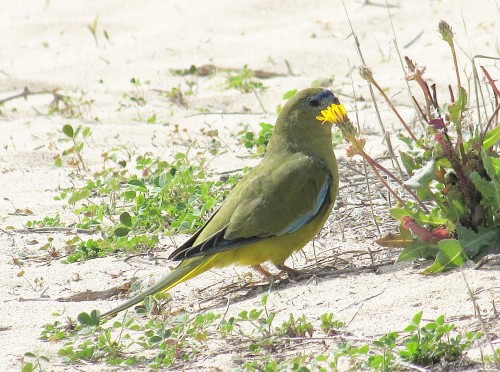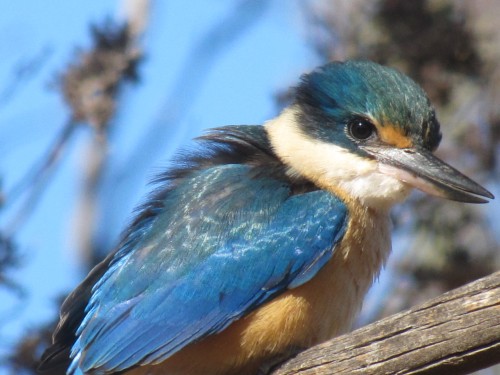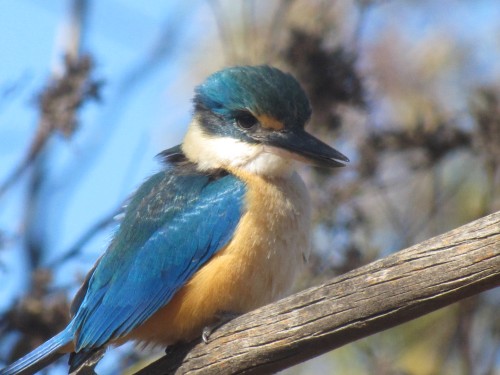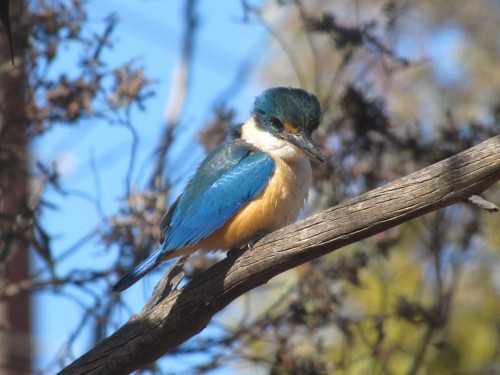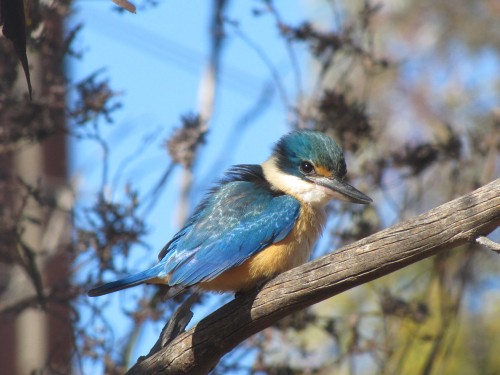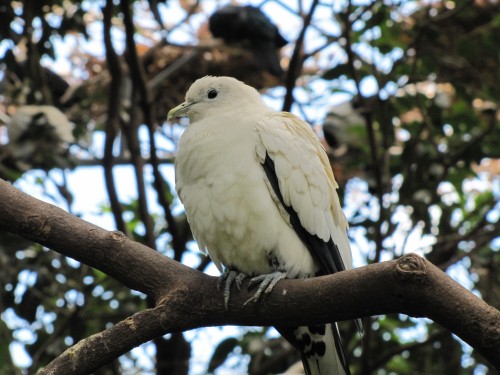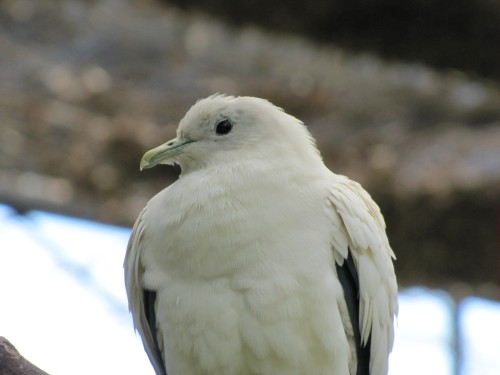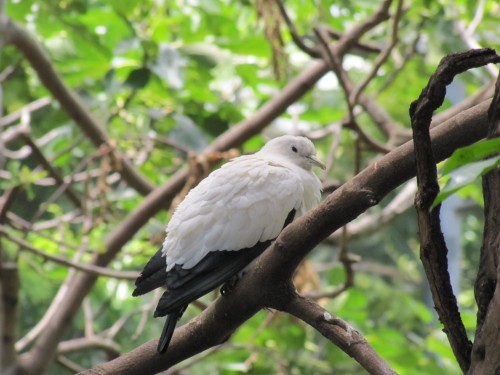An early Horsfield’s Bronze-cuckoo
I meant to write this post about two weeks ago. I have been distracted by other things; it happens.
First thing one morning just on two weeks ago I was on my way out and I heard the distinctive call of a Horsfield’s Bronze-cuckoo. I was running late for a meeting so I didn’t have time to track it down and get a photo but I know its call from years of hearing it around our home and garden. The photos I have shared today were taken some time ago and are not brilliant, but they give you a general idea of the appearance of this species.
What was interesting about this record is the early nature of the visit in late June. Most of the cuckoos we see and hear on our property are later in the year, especially around spring time when many species are nesting. I have also been reading quite a few reports online by other birders of various cuckoos appearing in southern Australia in recent weeks. One field guide I consulted claims that this species migrates to southern Australia and breeds from June to March, so it is not really all that early after all.
Sometimes I wonder if our birds actually read the field guides and follow the instructions therein.
The Rainbow Bee-eaters have arrived
We heard the Rainbow Bee-eaters late this afternoon.
My wife and I always love hearing and seeing the first Rainbow Bee-eaters of the season. Sometime in early spring this species moves from northern Australia to the southern parts of the country to breed.
They are unusual in their nesting habit: they make a small tunnel in the earth, on the graded sides of roads or in the banks of creeks, rivers and wash-aways. This tunnel can be up to 60cm long and ends in a small chamber where they lay their eggs. It has been quite a few years since they last nested on our property. I hope they will stay and make a nest this year.
Sewage plants and parrots
What does a highway, a sewage plant and an endangered parrot have in common?
Not much if you think about it – except if the bird in question is an Orange-bellied parrot.
Although I have been birding in the places where this very rare and beautiful bird spends its winters, I have yet to observe one in its natural environment. They spend their winters along the southern coast of Victoria and the south eastern coast of South Australia, including the Coorong which is just over an hour’s drive from my home. In the summer months the little population flies over the wild and stormy Bass Strait to Tasmania where they breed.
When I say “little population”, latest counts suggest that as few as 75 individual birds exist in the wild. That is is getting perilously close to extinct.
So what about that question I posed at the beginning? To answer that question you need to read an interesting article called “A highway, a sewage plant and an endangered parrot.” One very interesting fact I learned from the article is that the Orange-bellied parrot is one of only two parrots world wide which migrate.
I don’t have a photo of an Orange-bellied Parrot – not even of one in a zoo – but below I have included a photo of a very similar species, the Rock Parrot. You will just have to imagine an orange patch on the belly!
A beautiful guest at breakfast
We had a very pleasant encounter while having breakfast this morning. I was focussed on completing the daily crossword in the newspaper when my wife excitedly drew my attention to the Sacred Kingfisher just outside the window of the sun room where we often eat our meals.
My bird records are not completely up to date, but we are certain it has been several years since we had seen one in our garden, making the sighting just that little bit extra special. I had preciously taken a few photos of this species but rarely at such close quarters. This was about 5 metres away and he couldn’t see us through the glass due to the early morning reflections.
I raced to the office to get my camera – yes – even at my age I can still raise a trot, albeit a modest one. For the next 15 minutes the kingfisher posed in a number of ways for my camera. The results speak for themselves.
In between taking photos we were able to observe some of its unique behaviours. As it sat almost motionless on a dead branch – typical perching behaviour – it would gently bob its tail. It would then turn its head slightly, usually peering intently at the ground. During the 15 minutes it stayed the bird dived like an arrow to the ground to catch its prey. We couldn’t see clearly what it was eating but this species eats beetles, grubs, cockroaches, small lizards like geckos and an assortment of small insects.
This species usually gives away its presence in the bush by its far-reaching ki-ki-ki-ki call. On this occasion it was silent throughout the 15 minutes.
The Sacred Kingfisher is found over much of Australia. They are migratory, moving south to breed in the summer months. Other kingfisher species in the region where I live in South Australia include the very similar Red-backed Kingfisher and the well-known Laughing Kookaburra.
This is just a sample of the best photos I took – out of 36 all together.
I was so inspired by this event that I went and wrote a poem about the encounter. You can read the poem here.
Pied Imperial-pigeon, Adelaide Zoo
This elegantly beautiful bird is another species I have yet to see in its natural habitat. These photos of Pied Imperial-pigeons were taken earlier this year in a walk through aviary in the Adelaide Zoo, South Australia.
To see this species I would have drive for about five days. Its range is over 3000km (about 35 hours’ travelling time) away from my home in Murray Bridge, South Australia. It’s far quicker to drive for an hour so I can see it in the zoo, but this is far less interesting and rewarding than seeing it naturally.
This pigeon is found in far northern parts of Western Australia and the Northern Territory, as well as north eastern Queensland, all places I have yet to visit. Their range extends to the islands off the north coast of Australia as well as in Indonesia and Papua New Guinea. Some populations are migratory.
They are found in rainforests, eucalypt woodlands, coastal scrubs, mangroves and on islands. They are mainly fruit eaters.
You can learn more about them here and see more of my photos of this species here.
